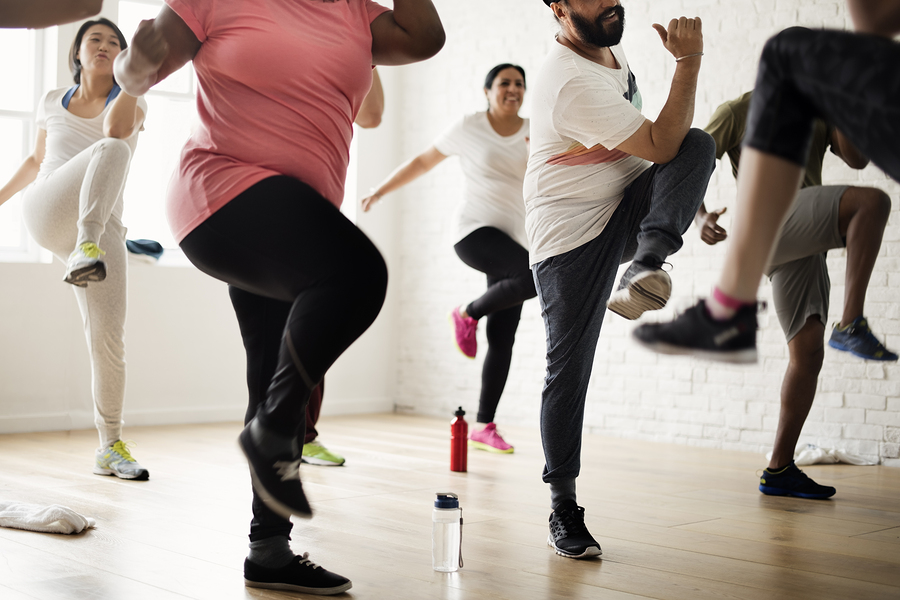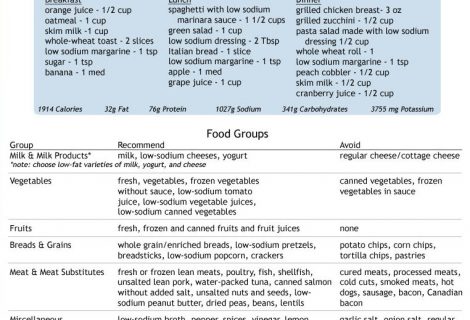Exercise Regularly
General Exercise
Physical activity can be divided into two types: aerobic and anaerobic.
Aerobic exercise involves large muscle movements over a sustained period of time and includes activities like:
- Running
- Fast walking
- Aerobic exercise class
When you make aerobic activity a part of your regular routine, your heart and cardiovascular system become much healthier. In addition, your mood improves because exercise relieves stress and tension.
Anaerobic exercise builds new muscle and includes activities like:
- Lifting weights
- Resistance training
Only 20 minutes of anaerobic exercise per day can make a dramatic change in your body’s shape and condition. Muscle mass helps protect bone mass, which is especially important for women.
Tips for Daily Routine
- Do housework yourself instead of hiring someone else to do it.
- Work in the garden or mow the grass. Using a riding mower doesn’t count! Rake leaves, prune, dig and pick up trash.
- Go out for a short walk before breakfast or after dinner. Start with 5-10 minutes and work up to 30 minutes.
- Walk or bike to the corner store instead of driving.
- When walking, pick up the pace from leisurely to brisk. Choose a hilly route.
- When watching TV, sit up instead of lying on the sofa. Better yet, spend a few minutes pedaling on your stationary bicycle while watching TV. Throw away your video remote control. Instead of asking someone to bring you a drink, get up off the couch and get it yourself.
- Stand up while talking on the telephone.
- Walk the dog…
Starting a Program
Check with your doctor before beginning an exercise program. Once you get the go ahead, start slowly and gradually work up to longer and more strenuous workouts. Over training, especially when you’re just starting out, can lead to strains and injuries.
If daily exercise isn’t practical for you, set a goal of exercising four times a week in 30 minute sessions. You can count minutes of activity that are already part of your day, such as time spent gardening, to achieve a goal of 30 minutes of exercise accumulated throughout the day.
Try parking farther away from your workplace to get a brief walk into daily routine. Take stairs instead of elevators.
Find the exercise that works best for your lifestyle, whether it’s a gym, on a hiking path or on a playing field. If you are going to exercise outside, make sure to protect your face and exposed parts of your body from sun damage.
The Power of Muscle
Exercise builds muscle mass and as your muscle mass increases you burn more calories even when you are not exercising.
Each pound of lean body mass burns about 14 calories per day. Each pound of fat tissue only burns about 2 calories per day.
The rate at which your body burns calories when at rest (not exercising) is known as your resting metabolic rate. It’s also referred to simply as “metabolism”. By increasing your metabolism through exercise, you make the process of losing or maintaining your weight easier.
Building lean muscle mass through exercise can help you reshape your body in the way you desire. Consuming low-fat protein daily can help you build lean muscle mass. Without adequate protein intake, your body will steal protein from your muscles and organs.
Low Back Pain Exercises
Exercise is an important adjunct to your treatment. However, be sure to follow your doctor’s instructions carefully. Do not overdo exercise, particularly when beginning. Start by trying the movement’s slowly and carefully.
If the exercise causes some mild discomfort, which lasts a few minutes, do not be alarmed. This will disappear as your muscles becomes stronger. But if pain is more than mild and continues for more than 15-20 minutes, discontinue exercising and speak to your doctor.
Some specific exercises can help your back. One is to gently stretch your back muscles. Lay on your back with your knees bent and slowly raise your left knee to your chest. Press your lower back on the floor. Hold for 5 seconds. Relax and repeat the exercise with your right knee. Do ten (10) of these exercises for each leg, switching legs.
While some exercises are specific for your back, it’s also important to stay active in general. Swimming and walking are exercises for overall fitness.
Diabetic Leg Exercises (9 of 9 picture displays).
People with diabetes are more likely to develop problems in the legs and feet. Daily exercise and not smoking can help prevent serious damage.

Walking: Take a brisk daily walk of ½ -1 hour. Try to increase the distance every day.
Staircase exercise: Walk briskly up a flight of stairs using only the balls of the feet.
Stretching the calf muscles: Lean with the palms of your hands against a wall. Keep your feet some distance away with the heels firmly on the floor. Bend your arms 10 times, keeping your back and legs straight.





